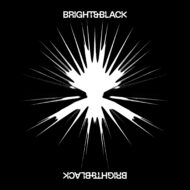 I like to play music loud, especially music that I have to review. Why? Because the release’s character will reveal itself much faster this way. If the album is good, it will sound even better played at high volume, if it has weird little details and inconsistencies they will have nowhere to hide.
I like to play music loud, especially music that I have to review. Why? Because the release’s character will reveal itself much faster this way. If the album is good, it will sound even better played at high volume, if it has weird little details and inconsistencies they will have nowhere to hide.
Having only a vague idea of what to expect with the release at hand, I had no reason to change my usual approach. Unsuspectingly, I sat down to give Bright & Black The Album a first listen. I turned up the volume and pressed play. And this almost gave me a heart attack. As far as dramatic entrances go, it doesn’t get much more dramatic than what album opener Nidhugg has in store for you. Although a debut, these are no humble beginnings. And why should they be? The people behind this project have decades of experience in music making. And you can tell.
Bright & Black, as the name says, is about contrasts. The project’s aim is to bridge a chasm that has been existing in the minds of people for a long time – the divide between metal and classical music. For this ambitious project, years in the making, people from the metal world have written music directly for a symphony orchestra. Not just any people from the metal world, of course, and not just any orchestra. Among the writers, contributors and performers are Eicca Toppinen (Apocalyptica), Fredrik Åkesson (Opeth), Erik Danielsson (Watain), Nico Elgstrand (Entombed AD), and Tomas Haake/Dick Lövgren (Meshuggah).
The music, in the end, was performed by the Baltic Sea Philharmonic orchestra, conducted by Kristjan Järvi. Jacob Hellner, composer and producer for various TV, film and stage productions, producer also for numerous bands, Rammstein, Clawfinger, Apocalyptica and Entombed AD among them, was responsible for the production. Together with Per Kviman he is the founder and artistic director of Bright & Black.
The bridging of the two worlds becomes evident in the release’s formal aspects already. The album’s twelve compositions clock in at one hour and five minutes – quite a bit longer than your standard metal album, but only about half the time of an average concert of a philharmonic orchestra.
The music that Bright & Black The Album offers falls under a category that is commonly referred to as classical music – music produced on instruments that usually form a classic orchestra: strings, woodwinds, brass and percussion. While it most definitely cannot be classified as metal, the various and varying soundscapes naturally do make allusions to that genre and even to the various styles and subgenres of metal, such as industrial, dark, and folk. Compared to classical music, the compositions feature much darker shades than what the average orchestra fan is used to.
One defining aspect of the release’s character are certainly the contributions of soloist Eicca Toppinen (Apocalyptica). Thanks to major, widely-known TV productions, cello music has become synonymous with certain historical and fictional settings and one cannot help but be reminded of them while listening to the music. Glorious battles and victories are called to mind, as well as exceptional hardships. And the makers of the album are not shying away from this connection, but they are welcoming and strengthening it. Song titles like Mounts of Misfortune, Armies of the Preposterous, A World of Strange, From Dust and Mud, And Flesh and Blood play into that context, a context frequently evoked by metal musicians.
We are a site that focuses primarily on metal releases and therefore I think it is fair to say that the average metal fan might struggle with the length of the album and with the duration of rather tranquil passages, as well as with the absence of our favourite instrument. But if you open your mind to this and think of it simply as music, I am sure you’ll find a lot to like. Nidhugg can’t leave anybody unimpressed, and the beginning of Bloodgrind gets pretty close to a metal soundscape, featuring battering percussion. Among my favourite pieces is also Collateral Damage. The combination of cello and percussion is simply glorious and very moving. Instead of playing air guitar as usual, it will make you play the conductor. I am looking very much forward to seeing and hearing this performed live.
Altogether, I liked Black & Bright The Album a lot. Mostly, I liked it for its boldness and megalomania, character traits shared by many exceptional composers and artists in general. I liked it for its partly Wagnerian scope and atmosphere, but also for the fact that a hundred or more people, a whole orchestra, worked together to make a certain sound happen. In a time where music making increasingly means one individual pushing buttons, this is quite an against-the-stream move. I also liked it for the fact that you can hear the ambience of the recording, the room where it took place, as opposed to the absence of space characteristic of programmed orchestras.
A very special and absolutely worthwhile addition for any music fan’s record collection.
(8.5/10 Slavica)

Leave a Reply